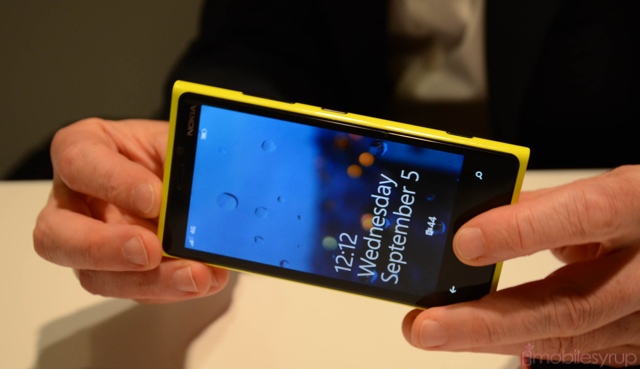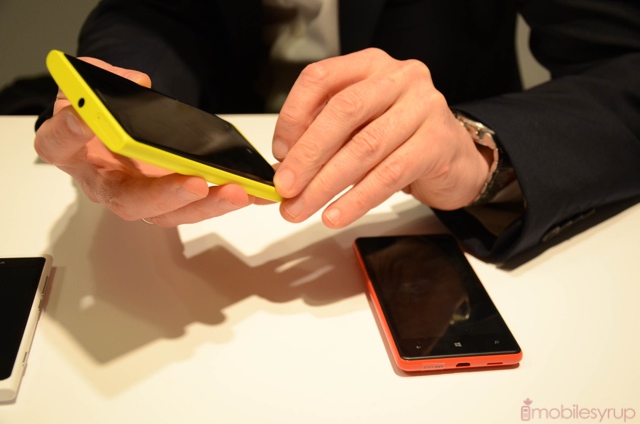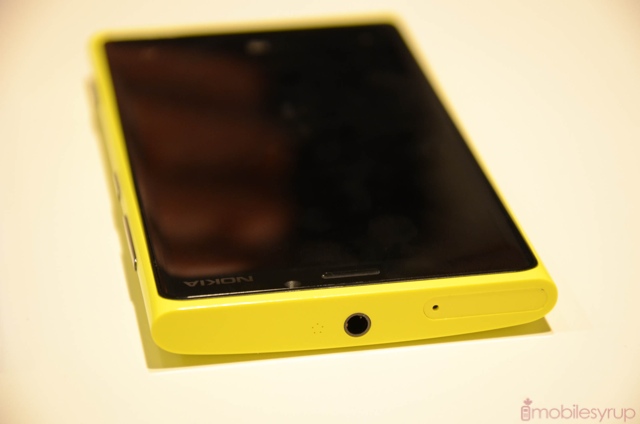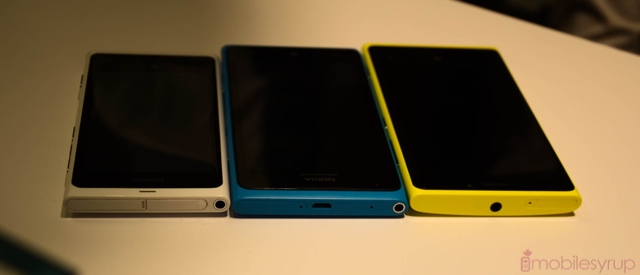
Today’s launch of the Nokia Lumia 920, and to a lesser extent the 820, focuses on what Nokia does differently than its competitors. Within an ecosystem desperate for acknowledgement from the mainstream and an interface extremely easy to learn and master, Windows Phone 8 is poised to be the next giant in smartphone ecosystems. But it’s also clear how difficult it is to turn hype, desire and practice into market share. Windows Phone 8 is a streamlined, powerful and capable operating system, and despite the fact that we haven’t seen everything — Microsoft is saving that for a future launch announcement — what we saw today is a good indication of how improved the experience can be with true HD displays, multi-core processors and a dedicated image processing chip.
The Lumia 920 is the key device here — like the Lumia 710 last year, the 820 is being relegated to sideline mentions — with its 8.7MP PureView camera module, “better than” high-definition 1280×768 pixel PureMotion HD+ screen, built-in wireless charging and 2000mAh battery. There are key omissions, too: no microSD slot, for starters, which will irk those looking to expand beyond the standard 16-32GB storage; and the phone is actually a not-so-svelte 10.7mm. The phone comes standard with 32GB of storage, though, and that 2000mAh battery is rated for 10hrs of 3G talk time.

On the software front, Nokia is focusing on its Locations Suite, which includes Drive, Maps, Transit and now City Lens, its augmented reality app that allows you to find restaurants and other attractions using the phone’s camera and GPS. While these are really cool, and will no doubt appeal to travellers the world over, it’s the camera software that is garnering the most hype here in New York. With built-in “lenses,” each capable of capturing tons of information in real time, the photo-taking experience on the Lumia is likely going to have the most “Wow” factor.
The Cinemagraph and Smart Shoot capabilities of the phone, which are likely derived from the acquisition of Scalado earlier this year, are examples of the most fully-integrated camera experience on a smartphone. It’s quite amazing to watch people visibly erased from a series of photos using smart algorithms and prediction.
The 8.7MP PureView camera module has a wide f/2.0 aperture, which is 10% larger than most equivalent smartphone sensors. Nokia’s image stabilization is really, really good: they showed us a comparison of the Lumia 920 and Samsung Galaxy S III walking down a boardwalk on a sunny day, both devices capturing 1080p HD video. The Lumia was completely steady, even as the camera operator was walking; the Galaxy S III was choppy and distracting.

According to Nokia’s whitepaper on PureView, “Rather than a single lens element being shifted to compensate for camera shake, Nokia’s OIS system moves the entire optical assembly in perfect synchronisation with the camera movement, or to be more precise, unintended camera shake. The benefit of this approach is that the amount and form of camera movement that can be compensated for is much greater.”
The phone is compatible with LTE networks all over the world, and we’d expect it to be compliant when it comes to Canada next year. The curved glass display and revamped design looks way better than the 900, and is truly a marvel of the industry. Samsung should take some notes (but not too many!) Built-in NFC, 1080p HD video and 1.5Ghz dual-core Snapdragon S4 processor round out the specs. There’s also 1GB RAM and a microSIM port.
Even at 4.5-inches, the Lumia 920 feels fantastic in the hand. Like many Android smartphones, it does appear a bit oversized, but there is little bezel to get in the way of the gorgeous screen. And the screen is stunning. Those black levels are absolute, and though we couldn’t confirm, Nokia claims that the PureMotion HD+ display (what a mouthful, seriously) is the brightest smartphone screen on the market. While LG would love to contend those claims — its True HD IPS displays put out some 600nits of brightness — we did indeed see maximum brightness levels far beyond any product we’re used to.

It will be interesting to see whether Nokia can contend with the iPhone 5 and its updated optics, as well as the latest Android phones coming out later this year. The Lumia 920 is a step in the right direction, and it is indeed a worthy successor to the 900, but based on what we’ve seen it will take a drastic shift in ecosystem dynamics — basically, developers will need to come to Windows Phone in droves — before the company can recover its huge market share. There is potential here: Windows Phone 8 shares a common kernel with Windows 8, meaning developers have access to the same core tools and drivers as the desktop version. But whether that means those builders will find a stable source of revenue is another story, and one we’re looking forward to exploring in greater detail in the coming months.

Learn more about the Nokia Lumia 920.
MobileSyrup may earn a commission from purchases made via our links, which helps fund the journalism we provide free on our website. These links do not influence our editorial content. Support us here.


